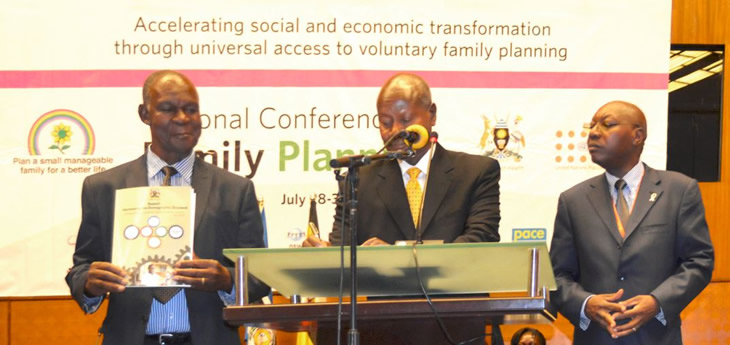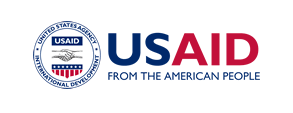The Health Policy Project ended in 2016. Work continued under Health Policy Plus (HP+) until 2022.
NEWS & VIEWS

United Nations Population Fund
KAMPALA, Uganda—Stating that “family planning is good for the children…for the family welfare, and for the country,” President Yoweri Museveni of Uganda made a landmark declaration of support at the country’s National Family Planning Conference on July 28. With birth spacing and timing, “the family would spend less on children and their needs. In turn, they would save and make wealth,” he said.
The president’s comments were informed by a new report on the demographic dividend, produced by the Uganda National Planning Authority (NPA), which Museveni signed and launched at the conference. The demographic dividend refers to the opportunity for faster economic growth that occurs when fertility rates fall, leading to a larger proportion of working-age adults and fewer young dependents. For high-fertility countries like Uganda, integrated family planning (FP), education, and economic development policies can facilitate a demographic dividend in the coming decades.
The NPA report launched by President Museveni emphasizes that the demographic dividend is not automatic and requires five key elements: a healthy population, investments in education, sound labor and economic policies, good governance, and a favorable population age structure. The USAID-supported Health Policy Project (HPP) worked closely with the NPA and other local stakeholders on the report, using HPP’s new DemDiv modeling tool to generate three scenarios of Uganda’s economic development. The model shows that if only modest investments in family planning and education are made along with aggressive economic and governance policies, GDP per capita would reach $6084 by 2040, up from $506 in 2011. However when more ambitious family planning and education programs are prioritized together with economic and governance policies, a demographic dividend of some $3500 in GDP per capita could be realized, bringing it to over $9500 by 2040, achieving the country’s Vision 2040 national development plan.
“This strong voice of commitment to family planning coming from a leader like President Museveni of Uganda, who has considerable influence in the African region, is likely to have wider implications for the way countries in the region are likely to view the role of family planning for the health of women and children, as well as the wealth of nations on the African continent,” says HPP partner Dr. Jotham Musinguzi, Regional Director of Partners in Population and Development, Africa Regional Office (PPD ARO), who joined President Museveni on the podium when the report was launched. “This is a real game changer.”
President Museveni, who committed to a major increase in national funding for family planning at the London Summit in 2012, recognizes its benefits for citizens’ well-being and national development. “I am glad that views on population are beginning to converge, because for a long time there has been confusion on population and economic transformation. Population per se is not the biggest problem, but rather the lack of economic growth, poor quality education, health,” he said at the conference. “We need quality health services, education, infrastructure and investments.”
For more information on Uganda results from the DemDiv model, see http://www.healthpolicyproject.com/index.cfm?ID=publications&get=pubID&pubID=385
For more information on DemDiv, see http://www.healthpolicyproject.com/index.cfm?id=topics-DemographicDividend
What's New
- Something to Build On: “Innovation Exchange” Celebrates the Health Policy Project’s Close and a New Beginning
- What Will it Take for Tanzania to Achieve ART Targets and Ensure Long-Term Sustainability of the HIV Response?
- Helping Kenya’s County Leaders Advocate for Increased Health Investments
- HPP Holds Working Meeting on Ensuring Responsible PEPFAR Transitions for Key Populations
- Health Policy Project Celebrates 2016 International Women's Day
- HPP Staff Participate in White House Conference on HIV Stigma Reduction

